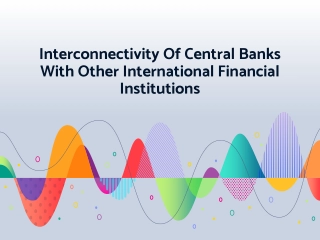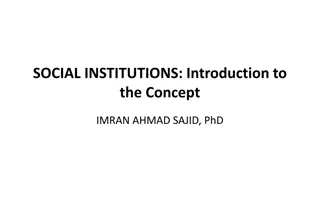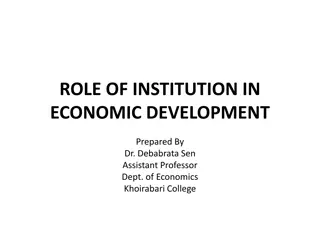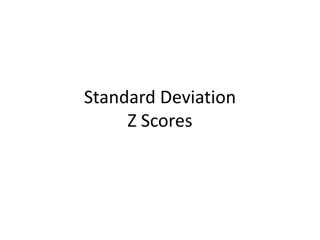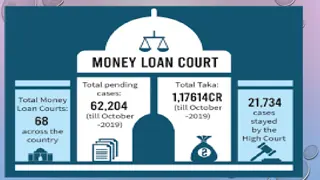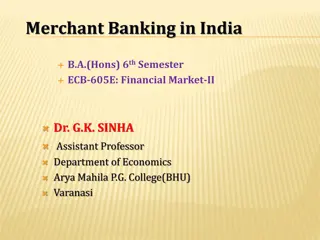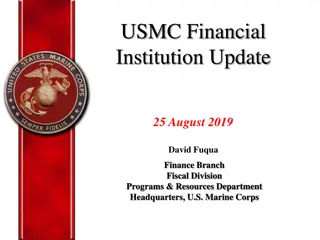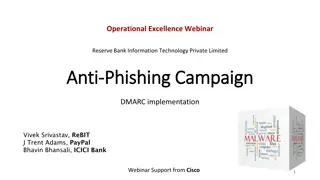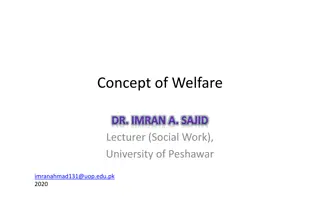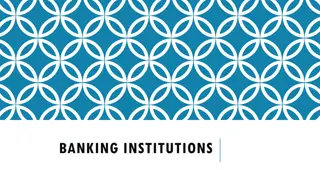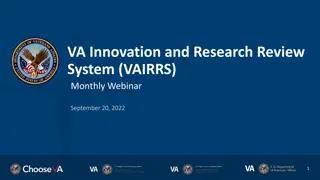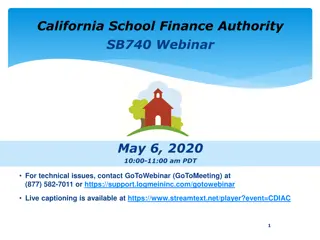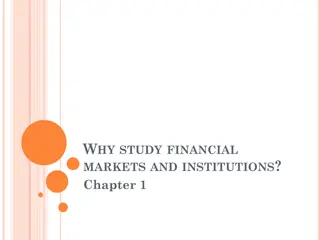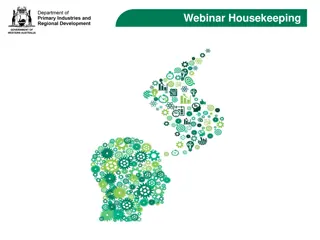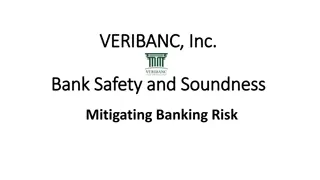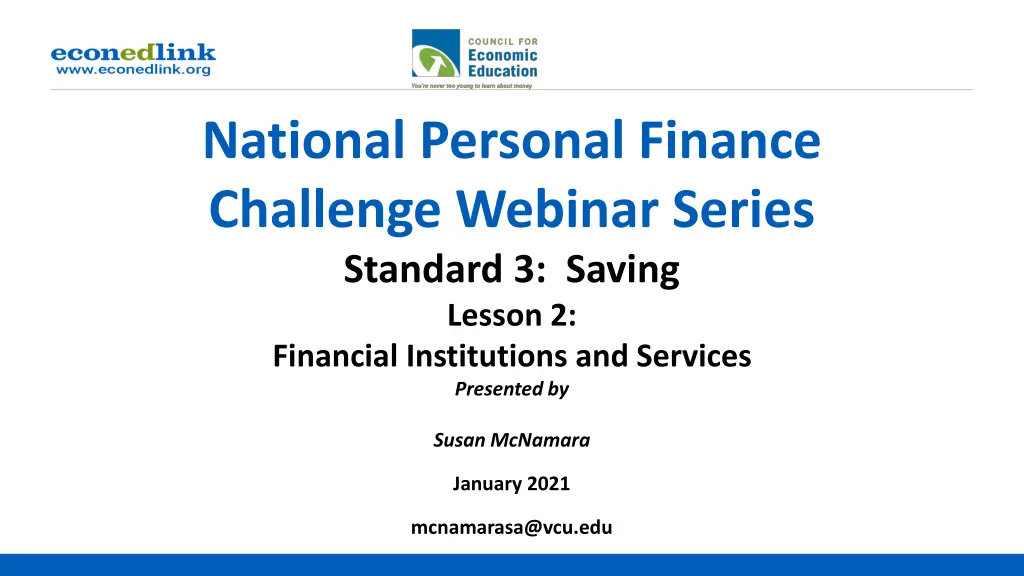
Understanding Financial Institutions and Services
Learn about financial institutions and services in this educational webinar series. Discover the importance of saving, different types of financial institutions, key financial services offered, and how to choose the right institution for your financial needs. Join us to enhance your knowledge and make informed financial decisions!
Download Presentation

Please find below an Image/Link to download the presentation.
The content on the website is provided AS IS for your information and personal use only. It may not be sold, licensed, or shared on other websites without obtaining consent from the author. If you encounter any issues during the download, it is possible that the publisher has removed the file from their server.
You are allowed to download the files provided on this website for personal or commercial use, subject to the condition that they are used lawfully. All files are the property of their respective owners.
The content on the website is provided AS IS for your information and personal use only. It may not be sold, licensed, or shared on other websites without obtaining consent from the author.
E N D
Presentation Transcript
National Personal Finance Challenge Webinar Series Standard 3: Saving Lesson 2: Financial Institutions and Services Presented by Susan McNamara January 2021 mcnamarasa@vcu.edu
Saving is the part of income that people choose to set aside for future uses. People save for different reasons during the course of their lives. People make different choices about how they save and how much they save. Time, interest rates, and inflation affect the value of savings.
Students will be able to : Determine the appropriate financial institution to use for various types in financial services. Determine the appropriate financial service for different situations.
Put students into small groups of two (elbow partners). Ask students: What is a financial institution? Name any financial institution(s) in your area.
What are some of the key financial services offered by these financial institutions?
A financial institution is a type of business that provides services to help people manage their money. The financial industry in the United States is complex and includes may kinds of institutions including banks. Over 90% of people in the United States have a checking or savings account in either a bank or a credit union.
Check-Cashing Store Payday Loan Store Bank Credit Union
Allows customers to cash checks, send wire transfers, and purchase money orders(pre-paid paper documents, other than checks) used for making payments. ID is required Usually, no credit background is required Fees are typically higher than banks or credit unions.
Offer customer loans for small amounts of money that must be repaid by the borrower s next payday (the next time you are paid by your employer). Obtain loan immediately, usually no credit background required. Must be 18 years of age, Proof of employment, and have a checking account. Interest rate charged may be as high as 300-400%, far greater than banks and credit unions. If you do not have enough to pay off the loan, you may need to take out another loan.
Offers customers checking and savings accounts that are insured by the Federal Government (FDIC) . Banks are for profit institutions. Provides longer-term loans Home mortgages Credit cards Retirement and Investment Accounts Interest rates on loans are lower than payday lenders Credit and background checks for loans and they make take longer to obtain Customers can develop a financial history
Non-profit financial institutions offered to their member-owners who meet certain requirements (may have a commonality such as military service, ex. Navy Federal Credit Union). Checking and savings accounts (insured by NCUA) Longer-term loans, mortgages, credit cards Retirement and investment accounts Interest rates on loans are lower than payday lenders Credit and background checks for loans and they make take longer to obtain Customers can develop a financial history
Deposit Services: Checking and Savings Accounts Deposit Services: Withdrawal, Deposit, Payment and Transfer Options Credit Services Investment Services
Certificate of Deposit (CD) Checking Account Deposit Insurance Money Market Deposit Account Savings Account
ATMS Overdraft Protection Automatic Deposit and Payment Person to Person Account (P2P) Debit Card Prepaid Debit Cards Money Order Wire Transfer Online Banking
Credit Card Installment Loan and Line of Credit Mortgage Student Loan Payday Loan
Individual Retirement Account (IRA) Stock and Bond Accounts
Setting Up and Keeping Records Writing and Endorsing Checks Using ATM s, Debit Cards, and Online Banking Reconciling Your Statement
Choosing a checking account Opening a Checking Account Making a Deposit Keeping Records
Writing Checks Endorsing Checks Pen Blank Current Date Restrictive Payee Special Amount (numerically) Amount (written out)
ATM (Automated Teller Machine) Debit Cards PIN (Personal Identification Number) Accessing ATM s Deposit Availability Make payments at stores Withdrawals (In and out of Network) Amount withdrawn now Keep receipts
Connects you to your account over the internet 24/7 Paycheck deposited automatically, bill pay, transfer funds between accounts, and checking balances Allows for recurring payments to be set up Username and password Statement balances
National Standards for Financial Literacy https://www.councilforeconed.org/resource/national-standards-for- financial-literacy/#sthash.11CbykLO.dpbs Financial Institutions and Services https://www.econedlink.org/resources/financial-institutions-and- services/
https://www.councilforeconed.org/resources/local-affiliates/

